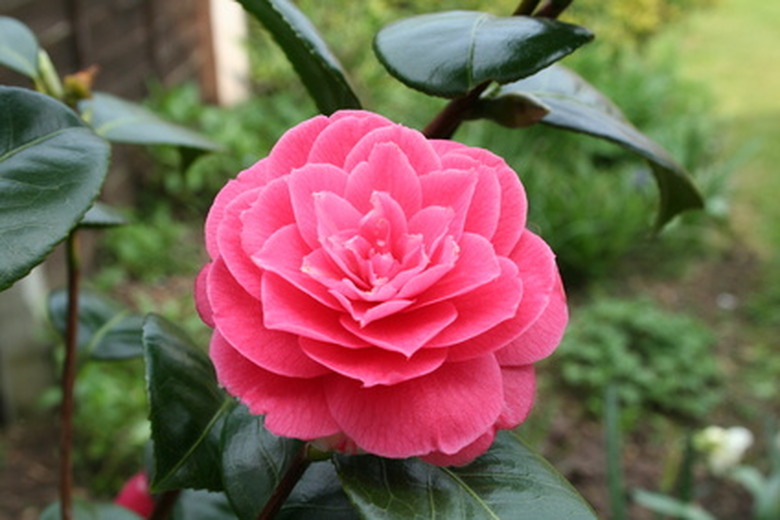Camellia Root Rot
Camellias are of great value in the garden. They beautify gardens with their deep green, glossy foliage and brighten the winter and early spring landscape with their colorful flowers. Usually easy to care for, camellias are sometimes prone to fungal diseases which undermine their health and beauty. Camellia japonica, the winter- and spring-blooming species, is prone to one of the worst fungal infections, phytophthora root rot.
Description
Phytophthora cinnamomi, commonly called root rot, is a fungus that lives in soil and infects many plants, including camellia, dogwood and rhododendron. The fungus enters injured roots and quickly spreads throughout the root system to the base of the trunk.
Symptoms
Camellias affected by root rot will show decreased vigor, followed by yellowing leaves (chlorosis), withering and branch dieback. Affected camellias can die in a season or struggle for a few years before dying.
- Camellias are of great value in the garden.
- Affected camellias can die in a season or struggle for a few years before dying.
Causes
Phytophthora cinnamomi enters camellias through injured root tissue. Plant roots can be injured by digging around the base of the tree or by careless mowing. String trimmers often injure trunk bases, where the fungus can also enter. Phytophthora cinnamomi thrives in wet soils with little aeration, so camellias in these locations are vulnerable.
Treatment
Unfortunately, there is no recommended treatment for phytophthora root rot in the home landscape. Affected camellias should be dug up and all parts discarded in the local landfill. If you would like to plant another camellia, choose another location.
- Phytophthora cinnamomi enters camellias through injured root tissue.
- Unfortunately, there is no recommended treatment for phytophthora root rot in the home landscape.
Prevention
Plant camellias in well-drained soil with good aeration. Never compost affected plants and don't store trunks and branches for firewood. Avoid moving affected soil to other parts of the garden. Don't transplant a camellia, which injures roots, unless absolutely necessary. Spray shovels and cutting tools after each use with disinfectant spray to prevent the spread of the disease.
Plant Selection
Camellia sasanqua, the fall-blooming species, is resistant to phytophthora and can be planted instead. If available, choose camellia japonica plants that are grafted onto camellia sasanqua rootstock for better success. Always buy vigorous, healthy plants from a reputable nursery that stocks healthy, well-cared-for plants.
- Plant camellias in well-drained soil with good aeration.
- If available, choose camellia japonica plants that are grafted onto camellia sasanqua rootstock for better success.
